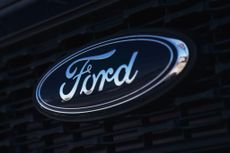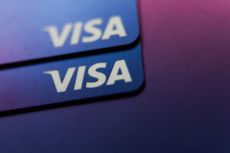Kiplinger Interest Rates Outlook: Expectations of a Fed Rate Cut Are Rising
A September rate cut is likely if July and August CPI reports are good – otherwise, plan on November.

Kiplinger’s Economic Outlooks are written by the staff of our weekly Kiplinger Letter and are unavailable elsewhere. Click here for a free issue of The Kiplinger Letter or to subscribe for the latest trends and forecasts from our highly experienced Kiplinger Letter team.
Progress on inflation seen in the May and June consumer price reports should keep the 10-year Treasury rate in the lower half of its 4%-4.5% trading range. Federal Reserve Chair Jerome Powell acknowledged the progress that the May price report represented, but he was clear that the Federal Open Market Committee wasn’t convinced yet that progress toward its 2% inflation goal had been achieved. To justify starting to cut short rates, the Fed likely wants to see good inflation reports continue for July and August, and especially for continued progress to be made in reducing services prices inflation, because these tend to be harder to bring down than goods prices. The Fed also typically discounts food and energy price changes because they fluctuate so often.
If the July and August consumer price reports are good, the Fed may begin to cut rates at its Sept. 18 meeting. If not, we think the Fed will wait until its policy meeting right after the November 5 election. We believe that the central bank would likely want to avoid making its first move during the middle of a presidential campaign, to avoid the appearance of favoring the current administration, but market expectations may force it to act so it does not appear to be deliberately waiting for political reasons.

Sign up for Kiplinger’s Free E-Newsletters
Profit and prosper with the best of expert advice on investing, taxes, retirement, personal finance and more - straight to your e-mail.
Profit and prosper with the best of expert advice - straight to your e-mail.
Once the Fed does start cutting interest rates, it will likely continue doing so into 2026, but will not return short-term rates to zero. Figure on the one-month Treasury bill’s yield falling to about 3.5%, and the bank prime rate ending up around 6.5%, down from the current 8.5%, after the Fed is finished reducing its benchmark rate.
The Fed started slowing the rate of reduction in its Treasury securities portfolio at its May 1 meeting. It will effectively increase the number of Treasury securities it purchases as existing bonds mature and roll off its balance sheet. Powell emphasized that it is still the Fed’s goal to reduce the overall amount of Treasuries and mortgage-backed securities it holds, however. It'll just do so at a slower pace.
Mortgage rates won’t be changing much, staying around 6.9% on average for 30-year mortgages and 6.2% for 15-year fixed loans. Further good inflation reports this year could result in a decline of a few tenths of a point. Mortgage rates typically move with the 10-year Treasury note’s yield, but they are higher than normal now, relative to Treasuries. The recent rise in short-term interest rates has crimped lenders’ profit margins on long-term loans. The eventual Fed cuts in short-term rates, whenever they occur, will boost banks’ lending margins and should bring some extra reduction in mortgage rates, too.
Other short-term interest rates have risen along with the Federal Funds rate. For investors, rates on super-safe money market funds are above 5%. Rates for consumer loans have ticked up, as well. Rates on home equity lines of credit are typically connected to the prime rate (now 8.5%), which in turn moves with the Federal Funds rate. Rates on short-term consumer loans such as auto notes have also been affected. Financing a vehicle now costs roughly 7.0% for a six-year loan for borrowers with good credit.
Corporate bond rates are moving with changes in long-term Treasury rates. AAA-rated bonds are now yielding around 4.8%, BBB bonds 5.5%, and CCC-rated bond yields are around 13.6%.
Related Content
Get Kiplinger Today newsletter — free
Profit and prosper with the best of Kiplinger's advice on investing, taxes, retirement, personal finance and much more. Delivered daily. Enter your email in the box and click Sign Me Up.

David is both staff economist and reporter for The Kiplinger Letter, overseeing Kiplinger forecasts for the U.S. and world economies. Previously, he was senior principal economist in the Center for Forecasting and Modeling at IHS/GlobalInsight, and an economist in the Chief Economist's Office of the U.S. Department of Commerce. David has co-written weekly reports on economic conditions since 1992, and has forecasted GDP and its components since 1995, beating the Blue Chip Indicators forecasts two-thirds of the time. David is a Certified Business Economist as recognized by the National Association for Business Economics. He has two master's degrees and is ABD in economics from the University of North Carolina at Chapel Hill.
-
 Want to Earn $1 Million More Over Your Lifetime? Do This
Want to Earn $1 Million More Over Your Lifetime? Do ThisIt's simple: Go to college or a trade school. It's an investment that will pay huge dividends for the rest of your life. And the benefits go far beyond money.
By Brian Evans, CPA, PFS Published
-
 What Impact Does Politics Have on Insurance?
What Impact Does Politics Have on Insurance?Some governors choose their state's insurance commissioner, while other states elect theirs, and that person has power over insurance issues, including rates.
By Karl Susman, CPCU, LUTCF, CIC, CSFP, CFS, CPIA, AAI-M, PLCS Published
-
 Stock Market Today: Dow Outperforms After IBM Earnings
Stock Market Today: Dow Outperforms After IBM EarningsInvestors also parsed a strong reading on second-quarter GDP and a dismal decline in durable goods.
By Karee Venema Published
-
 The 6 to 1 Grocery Method Can Save You Time and Money
The 6 to 1 Grocery Method Can Save You Time and MoneyThe 6 to 1 Grocery Method can help you save money, reduce waste and eat healthier.
By Erin Bendig Published
-
 Ford Stock Plunges on Earnings Miss: What to Know
Ford Stock Plunges on Earnings Miss: What to KnowFord stock is down big Thursday after the automaker fell short of earnings expectations for its second quarter. Here's what you need to know.
By Joey Solitro Published
-
 What IBM's New Free Cash Flow Forecast Means for Investors
What IBM's New Free Cash Flow Forecast Means for InvestorsIBM stock is higher Thursday after the tech giant beat Q2 earnings expectations and raised its free cash flow guidance. Here's what you need to know.
By Joey Solitro Published
-
 Is Chipotle Stock Still a Buy After Earnings?
Is Chipotle Stock Still a Buy After Earnings?Chipotle stock is extending its recent slide despite a Q2 earnings beat, leaving some folks to wonder if it's still a buy. Here's what you need to know.
By Joey Solitro Published
-
 Why This Economist Thinks the Fed Is Already Late to Cut Rates
Why This Economist Thinks the Fed Is Already Late to Cut RatesMoody's Analytics chief economist Mark Zandi talks to Kiplinger about what he thinks the Federal Reserve is getting wrong on inflation.
By Anne Kates Smith Published
-
 Visa Is the Worst Dow Stock Wednesday. Here's Why
Visa Is the Worst Dow Stock Wednesday. Here's WhyVisa stock is down sharply Wednesday after the credit card company came up short of revenue expectations for its fiscal Q3.
By Joey Solitro Published
-
 Tesla Stock: Another Analyst Moves to the Sidelines After Earnings
Tesla Stock: Another Analyst Moves to the Sidelines After EarningsTesla stock is spiraling Wednesday after the EV maker's big earnings miss and Wall Street has been quick to weigh in. Here's what you need to know.
By Joey Solitro Published